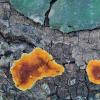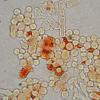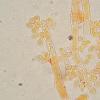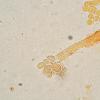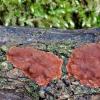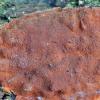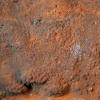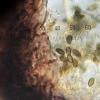
02-12-2025 18:59
This pair of ascos 2.5cm across were on recently b

02-12-2025 19:25
Buckwheat PeteHello, can anyone identify this hairy fungus growi

30-11-2025 12:53
 Edvin Johannesen
Edvin Johannesen
White short-stipitate apothecia found on thin twig

30-11-2025 10:47
 William Slosse
William Slosse
I recently found a collection of small Peziza sp.

27-11-2025 12:01
Thomas Læssøehttps://svampe.databasen.org/observations/10496727

27-11-2025 11:46
Thomas Læssøehttps://svampe.databasen.org/observations/10493918

17-09-2025 10:50
Heather MerryleesHi there!I am hoping for any advice on the identif

29-11-2025 08:40
 Andreas Millinger
Andreas Millinger
Hello,on a splintered part of a branch on the grou
Despite it seemed rather young, I did not found a single ascus in the perithecia, only spores and irregular, hyaline hyphae.
Spores 6-8x3-4 µm, brown (a little olive tinged in KOH), inequilateral; with a long germ slit on the more round side, rather difficult to see. Perisporium separating in KOH.
I think there are no doubts, Hypoxylon ticinense. But I never found it before so a confirmation will be appreciated.
Thanks in advance.
Mario

yes typical ticinense. It's fine you could follow the development over several months.
Jacques
actually at first I had not idea on what it could be...
Now I will try to identify the host; is a dead fallen branch in a mixed wood.
Regards
Mario

Only a repartition area remark :
It's a very common species here (french basque country).
If you are in a little river, you can find it on all branches fallen in or near the stream.
More common than Scutellinia crinita, if you see what I mean !!
Light orange to yellow-red color is very typical in fact.
Beñat
The host was Cornus sanguinea. The spot is a mixed wood around a wet area with Alnus glutinosa. Around the alders there are a lot of different trees and shrubs (only broadleaved), and I have found H. ticinense several times, always and only on Cornus, and always on dead branches (standing or fallen) at least 4-5 cm diameter, never seen on twigs.
During the collection I had to saw the wood sometimes; it has a strong and very characteristic smell, as reported by Vittadini, identical to the smell of Tuber brumale!
Regards
Mario
